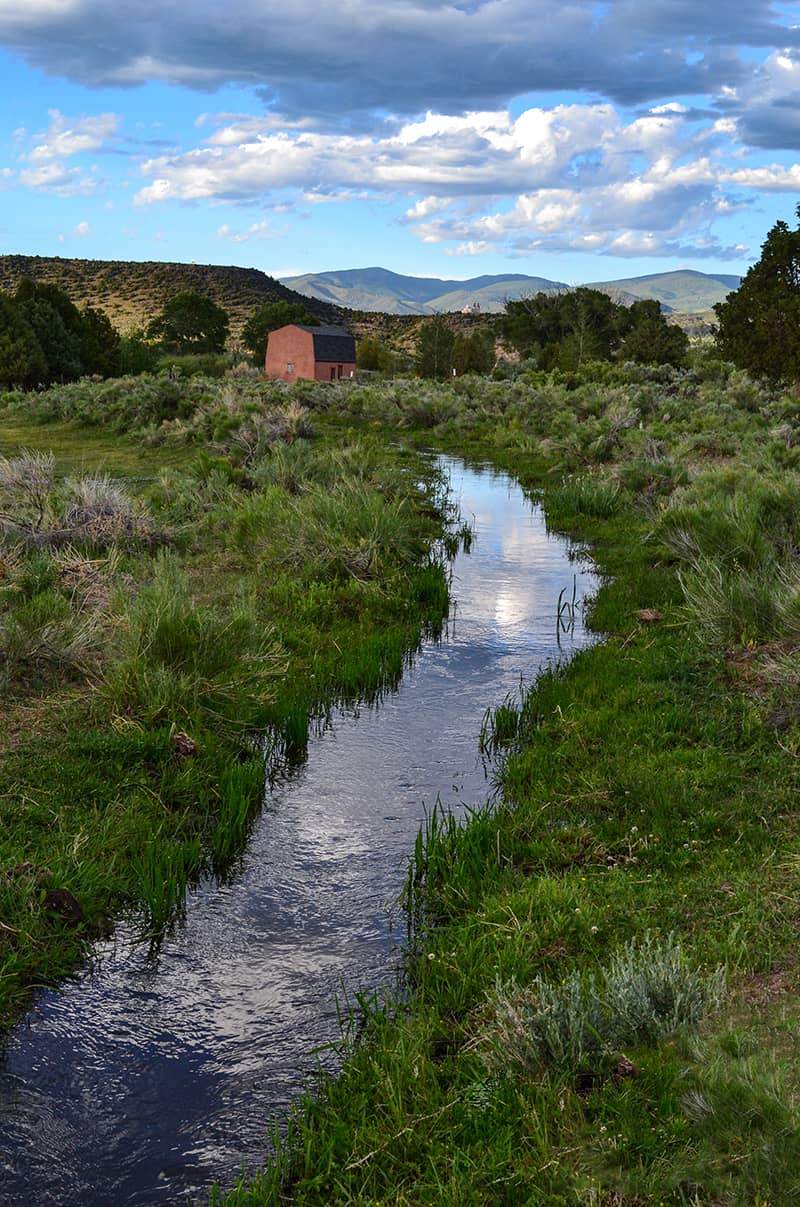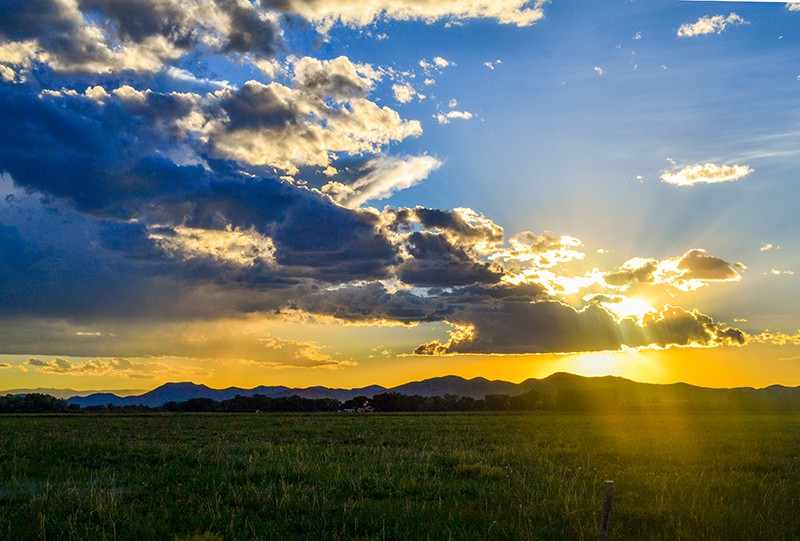Acequias of the san luis valley
preserving a historic way of life by preserving land and water
“acequia” (uh-sey-kyuh)
The full beauty of the San Luis Valley is often missed by visitors from the Front Range. They take trips to the valley to see the Great Sand Dunes National Park or perhaps hike a fourteener, and then return to more familiar territory. We at Colorado Open Lands think the landscape deserves a deeper look. After more than fourteen years of conservation work in the valley, this is the story of the difference that time and energy can make.
In 2008, Colorado Open Lands hired a Fellow to add to our conservation staff and help launch her career in conservation. Sarah Parmar was fresh out of college and equipped with plenty of life experience growing up on her family’s cattle ranch in Arizona. The Colorado Conservation Partnership had designated the Southern San Luis Valley a statewide priority landscape, and Sarah was tasked with creating conservation priorities and a plan for the area, with funding from the Trinchera Blanca Foundation.
Sarah started by listening. She attended community meetings and met with local leaders. Some welcomed her with open arms, and others were more cautious.
The heart of the Southern San Luis Valley is a system of water-sharing called acequias. The acequia way of life means that each farm or ranch along the irrigation ditch is given an equal vote in how water is distributed. No matter how much land they have, sharing is the foundation of the community. It makes sure everyone is cared for, in drought years and in years with plenty of water. Many of the acequia landowners can trace their ancestry back before Colorado was granted its statehood, and these acequias represent some of Colorado’s oldest water rights.



Photo by Devon Peña
By doing a lot of listening and learning, Sarah came to understand that this system was equitable and sustainable, and that the primary community concern was not the land, but the water rights. As newcomers moved into the area, they were not abiding by the social norms of the acequias, which had been passed down verbally over generations, rather than written down. The function of the acequias depended on sharing water in dry years and on community cohesion created by events like the limpieza, or annual ditch cleaning. Community members feared not only the loss of social fabric, but that newcomers may want to sell their water rights separately from the land.
Sarah enlisted help from water attorney Peter Nichols, who turned to a colleague at the University of Colorado’s School of Law. What began as a summer research project developed into a legal assistance program for acequia farmers to meet with law students to formalize traditions into legally defensible bylaws. This new arrangement for the law school operated with students under supervision from volunteer attorneys in water and real estate. The partnership continues, and in its eight years, has resulted in thousands of hours in pro bono legal work for this community, which has Colorado’s lowest median income. The law school and community members also developed an acequia water rights handbook in English and Spanish to give people confidence that they understood the law and their rights.
The next step in ensuring the future viability of this community was helping people share knowledge as they shared water. In 2012, Colorado Open Lands co-hosted the first Congreso de Acequias, in partnership with the Sangre de Cristo Acequia Association. Now in its twelfth year, the Congreso is a place for community members to gather and learn from each other.
As COL staff became a more familiar sight around town, Sarah was also discussing the possibility of conservation easements with community members. As always, our conservation tools are presented simply as another option for how to steward land, and the process is entirely driven by the goals and wishes of the landowner. In 2013, Sarah completed our first acequia conservation project in Costilla County, on the Lobato Farm. The Lobato family members continue to be great partners and advocates for conservation in their community.
By 2014, Colorado Open Lands’ work had begun to attract the attention of additional funders. With an investment from the LOR Foundation, we were able to open an office in downtown Alamosa and hire full-time staff. The local staff members have built on Sarah’s successes and we now have several active acequia projects.
Furthermore, Colorado Open Lands has raised over $7 million in funding for conservation easements in this area. That money goes directly into the community, and often stays there, as farmers and ranchers reinvest in their operations.
Colorado Open Lands is continuing to help landowners along the Rio Culebra protect their water rights permanently. Our “Acequia Initiative” suite of projects has attracted a diverse and committed set of funders including the LOR Foundation, Great Outdoors Colorado, the Colorado Water Conservation Board, the Sangre de Cristo National Heritage Area, the Trinchera Blanca Foundation, and the Natural Resources Conservation Service (NRCS).
Through the NRCS Regional Conservation Partnership Program, COL raised funds to not only purchase conservation easements, but also to support investments on the land and acequias to bolster long-term resilience. Several properties in the Acequia Initiative are at the end of the acequia ditch, an ideal place for protecting water rights. When these water rights are protected, no one upstream can cause “injury” to water users downstream. Protecting the end of the ditch means the water of the entire ditch is protected – permanently. This ensures these communal waters remain with the community, preserving this important original settlement.
Achievements like these don’t happen overnight, and they don’t happen with one-size-fits-all solutions. Land trusts do their best work when they listen and learn about what individual communities need and then bring resources like legal assistance or funding to help.
One local voice says it best.
Hear from Fina Lobato, whose family has been ranching in the San Luis Valley since before Colorado’s statehood.
